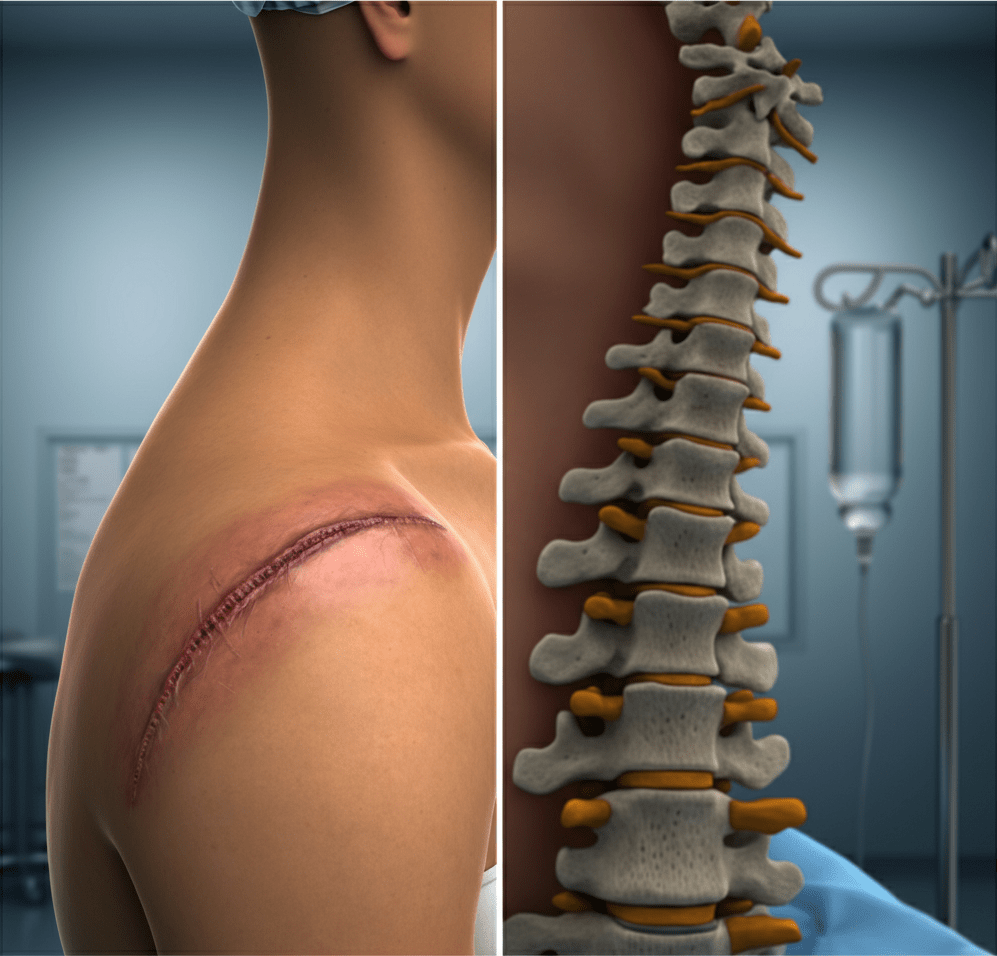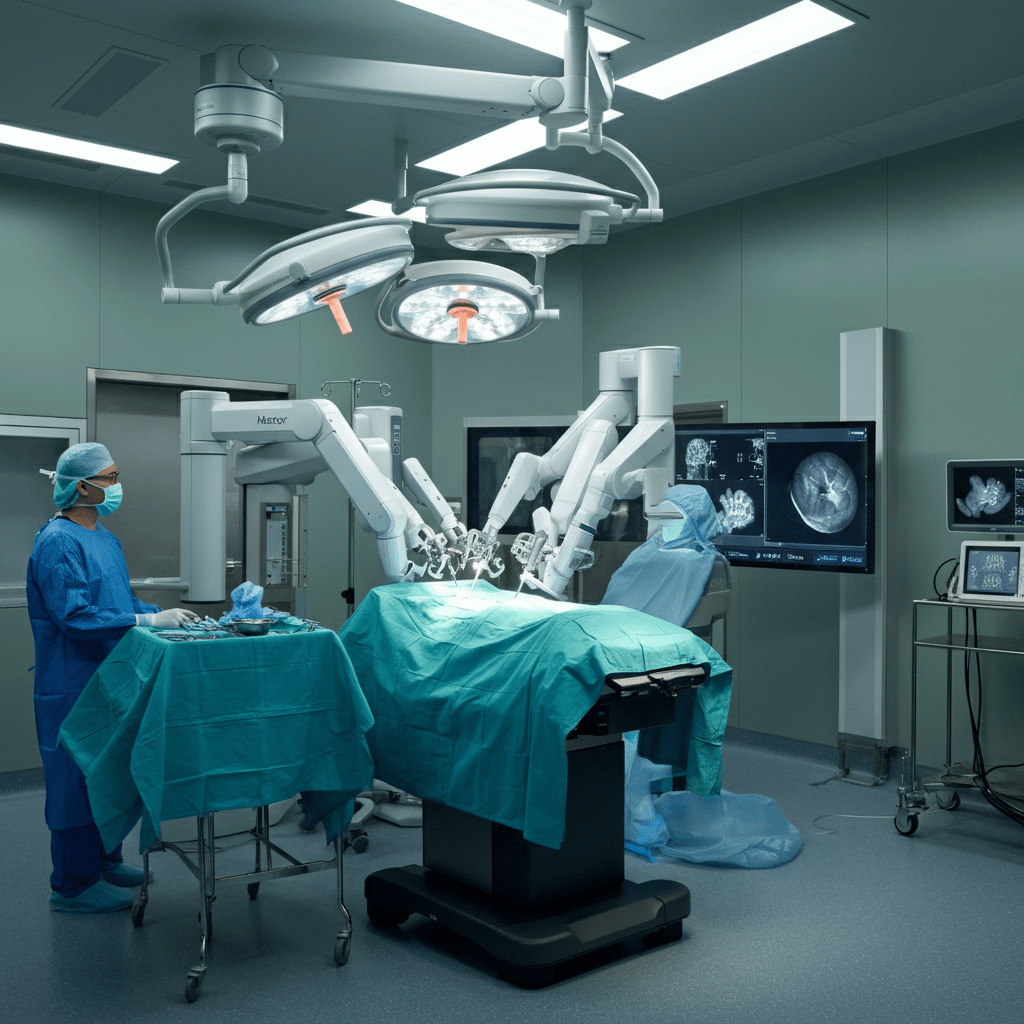Spinal surgery has come a long way from the days of long hospital stays and painful recoveries. Today, cutting-edge advancements are transforming the field, offering patients faster recovery, less pain, and better outcomes. These innovations focus on two major breakthroughs in spinal surgery—minimally invasive procedures and robotic-assisted surgeries. Together, they’re redefining how we approach spine health and paving the way for a future filled with hope and healing.

Understanding Minimally Invasive Spine Procedures
What Are Minimally Invasive Spine Procedures?
Minimally invasive surgery (MIS) uses small incisions and advanced tools to address spinal problems with minimal disruption to surrounding tissues. Unlike traditional open surgeries, which often require large incisions and extensive recovery, MIS significantly reduces the physical toll of surgery.
Conditions commonly treated with MIS include herniated discs, spinal stenosis, and degenerative disc disease.
| Aspect | Traditional Open Surgery | Minimally Invasive Surgery |
| Incision Size | Large (3-6 inches) | Small (under 1 inch) |
| Recovery Time | Weeks to months | Days to weeks |
| Risk of Complications | Higher | Lower |
| Cosmetic Impact | Noticeable scarring | Minimal scarring |
Benefits of Minimally Invasive Techniques

Patients choosing minimally invasive techniques often experience life-changing benefits, such as:
- Reduced pain thanks to smaller incisions and less tissue damage.
- Faster recovery, with many patients going home the same day.
- Lower risk of complications, such as infections or excessive bleeding.
- Minimal scarring, a bonus for those concerned about aesthetics.
Patients frequently report quicker returns to work and daily activities, a testament to the tangible benefits MIS provides.
Technologies Behind These Procedures
Minimally invasive spinal surgery relies on advanced tools, including:
- Endoscopes: Tiny cameras that guide surgeons through precise spinal movements.
- Navigation Systems: GPS-like technology that maps the spine and helps surgeons operate with pinpoint accuracy.
These technologies allow for safer procedures, ensuring every move is calculated and effective.
Exploring Robotic-Assisted Spinal Surgery
How Robotic Systems Are Revolutionizing Spine Care
Robotic-assisted surgery is raising the bar in spinal care. Robots like the Mazor X and ExcelsiusGPS work alongside surgeons, offering unparalleled precision during even the most complex procedures. Combining robotics with 3D imaging and AI navigation, these systems create a highly accurate, personalized approach to spinal surgery.
Imagine this: before surgery, the robot generates a detailed map of your spine. During the operation, it guides the placement of implants or screws with millimeter precision—a true game-changer for complex spinal cases.
Advantages of Robotic-Assisted Surgery

Improved Precision: Robots assist surgeons in achieving optimal placement of screws and implants, reducing errors even in challenging conditions.
Enhanced Safety: Robotic systems minimize human error, offering patients greater peace of mind.
Shortened Surgery Times: Reduced time under anesthesia leads to quicker recoveries and fewer complications.
Did You Know? Robotic-assisted surgeries have been shown to lower the chances of revision surgery by up to 50%, giving patients greater confidence in long-term outcomes.
Patient Success Stories with Robotic-Assisted Surgery
Maria, a 55-year-old scoliosis patient, struggled with chronic back pain for years. After undergoing robotic-assisted spinal surgery, she was astonished by her recovery. “Before, I couldn’t even walk around my block. Now, just weeks after surgery, I’m enjoying my morning walks pain-free,” says Maria. Her story highlights the life-changing impact these advancements offer.
Curious if robotic-assisted surgery could be your solution? Speak with your spine specialist to learn more.
How These Innovations Improve Patient Outcomes

Enhanced Precision and Safety
Every millimeter matters in spinal surgery. Advances in technology ensure surgeons achieve the highest level of accuracy, reducing risks and improving outcomes for patients. Tools like robotic systems and navigation technology make complex procedures safer and more reliable.
Quicker Recovery and Less Downtime
Imagine walking the day after surgery instead of lying in bed for weeks. With MIS and robotic-assisted techniques, that dream is now reality. Many patients are back to their routines within days, benefiting from shorter recovery periods and less need for pain management.
Lower Risk of Long-Term Complications
When implants are placed with precision, alignment is improved, reducing the risk of future problems like hardware failure or additional surgeries. These modern methods don’t just fix the issue—they ensure lasting stability and comfort.
Real-World Impact
Studies show that patients undergoing these advanced spinal surgeries report greater satisfaction, quicker recovery times, and a significant improvement in their quality of life compared to traditional methods.
Is Advanced Spinal Surgery Right for You?
Who Can Benefit from These Techniques?
Advanced spinal surgery is a great option if you:
- Have conditions like herniated discs or spinal deformities.
- Want faster recovery and less pain post-surgery.
- Are seeking minimally invasive or robotic-guided approaches for precision care.
Questions to Ask Your Spine Specialist
Before undergoing surgery, it’s important to ask the right questions:
- “Which advancements are best suited for my condition?”
- “What are the risks and benefits of minimally invasive spinal surgery?”
- “Does this hospital offer robotic-assisted procedures?”
A collaborative discussion ensures you choose the right path for your needs.
The Future of Spine Health
Modern spinal surgery is reshaping lives, combining innovation with compassion. From less pain and shorter recovery times to enhanced safety and precision, these advancements offer hope for a brighter, more active future.
Take Action Today: Are you ready to reclaim your life and conquer back pain? Consult a spine specialist to explore whether minimally invasive or robotic-assisted spinal surgery is the right choice for you. A healthier spine—and a better quality of life—is just one consultation away.

